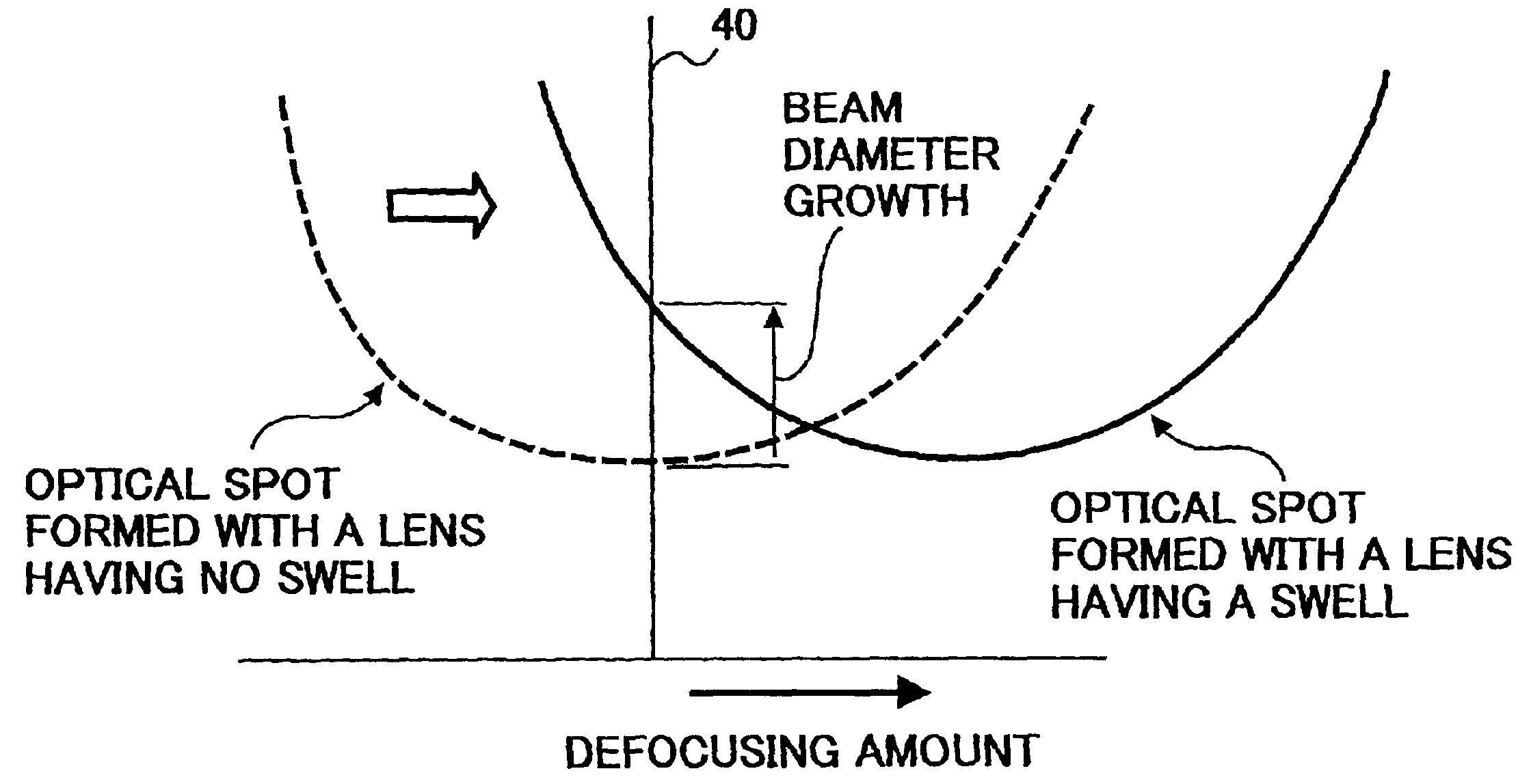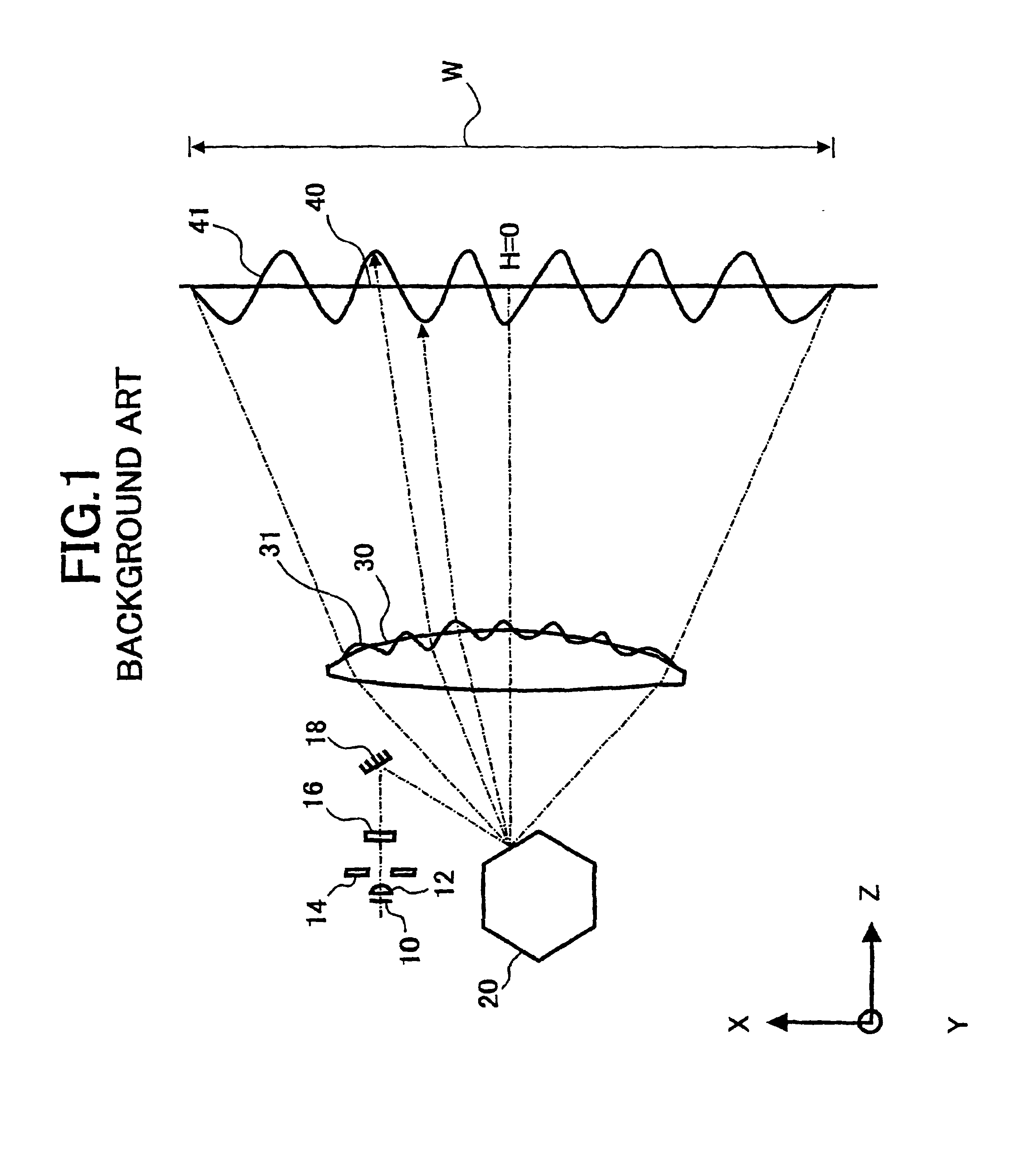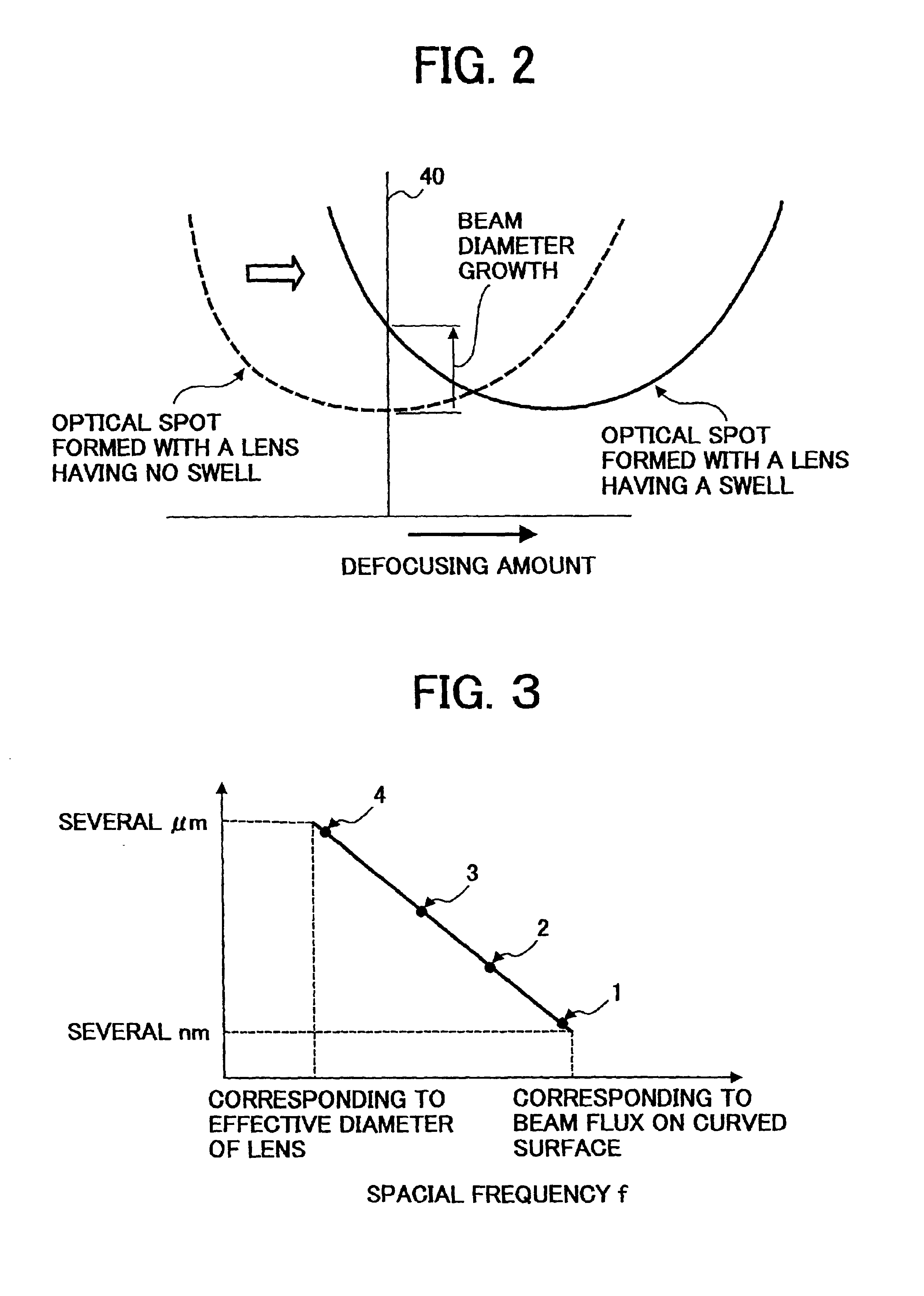Optical scanner, optical scanning method, scanning image forming optical system, optical scanning lens and image forming apparatus
a scanning method and optical scanning technology, applied in the field of optical scanning methods, optical scanning methods, scanning image forming optical systems, optical scanning lenses and image forming apparatuses, can solve the problems of actual formed optical surface shape contains a shape error to some extent relative to the designed surface shape, image quality degradation, density unevenness, etc., and achieve compact optical scanning. high efficiency and energy saving
- Summary
- Abstract
- Description
- Claims
- Application Information
AI Technical Summary
Benefits of technology
Problems solved by technology
Method used
Image
Examples
numerical example 1
[0210]The light source 1 is a semiconductor laser having a light emitting wavelength of 780 nm. The coupling lens 2 has a collimating function and the luminous flux is emitted from the coupling lens in the form of a parallel luminous flux.
[0211]The aperture 2A has an opening width of 9.0 mm in the main scanning direction and 1.6 mm in the sub-scanning direction.
[0212]The cylindrical lens 3 has a focal length of 58.7 mm.
[0213]The rotary polygon mirror 4 has five deflecting reflective faces and an inscribed circle radius of 20 mm. The rotational center and the deflecting starting point (the position of the point of intersection between the principal beam and the deflecting reflective surface when the principal beam of the deflected luminous flux is in parallel with the optical axes of the lenses L1 and L2) are spaced apart from each other in the optical axis direction by a distance of m=18.475 mm, and in the main scanning direction by a distance of h=8.0 mm.
[0214]In a state in which t...
numerical example 2
[0248]A concrete numerical example of the optical scanner illustrated in FIG. 8 will now be presented.
[0249]The light source 1 is a semiconductor laser and has an emitting wavelength of 780 nm. The luminous flux emitted from the coupling lens 2 is a weakly divergent flux.
[0250]The aperture 2A has an opening width of 9.0 mm in the main scanning direction, and 1.6 mm in the sub-scanning direction.
[0251]The cylindrical lens 3 has a focal length of 58.7 mm.
[0252]The rotary polygon mirror 4 has six deflecting reflective mirror surfaces and an inscribed circle radius of 18 mm. The rotation center and the starting point of deflection are spaced apart from each other by m=16.5 mm in the optical axis direction, and by h=7.4 mm in the main scanning direction. The incident angle into the rotary polygon mirror is 60°. The angle of view is within a range of from −43° to +43°. The luminous flux entering the deflecting reflective surface of the rotary polygon mirror 4 from the light source side is...
example 1
[0321]For an optical system having λ=650 nm, two lenses (K=4), a beam diameter: 27 μm (w=13.5 μm), f=225.3 mm and n=1.52398, with respect to ΔC in the main scanning direction,
ΔC≦2.1084E−05
is a necessary condition for inhibiting a change in the beam spot position, and
ΔC≧5.2709E−07
is the sufficient condition.
PUM
 Login to View More
Login to View More Abstract
Description
Claims
Application Information
 Login to View More
Login to View More - R&D
- Intellectual Property
- Life Sciences
- Materials
- Tech Scout
- Unparalleled Data Quality
- Higher Quality Content
- 60% Fewer Hallucinations
Browse by: Latest US Patents, China's latest patents, Technical Efficacy Thesaurus, Application Domain, Technology Topic, Popular Technical Reports.
© 2025 PatSnap. All rights reserved.Legal|Privacy policy|Modern Slavery Act Transparency Statement|Sitemap|About US| Contact US: help@patsnap.com



